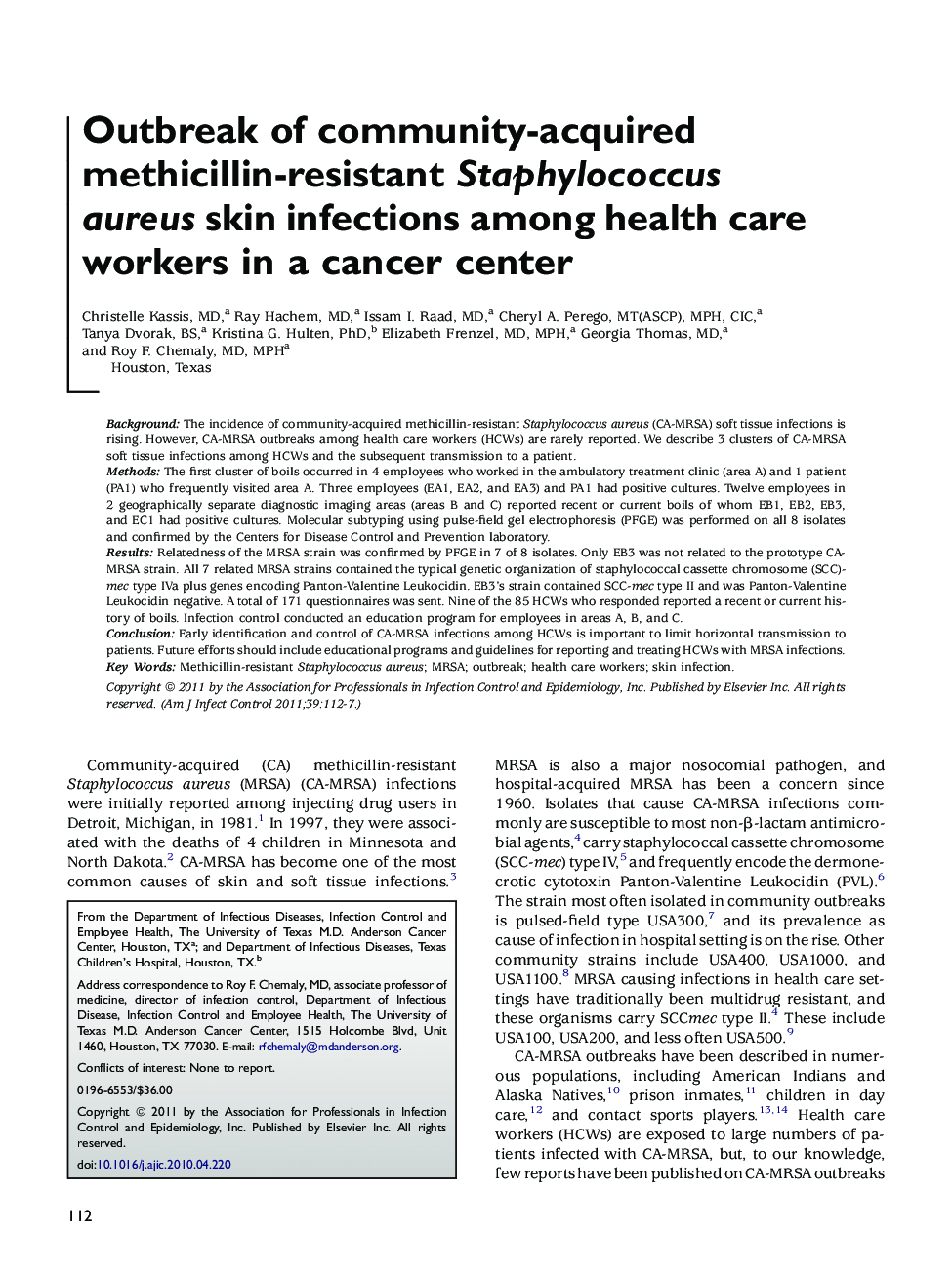| Article ID | Journal | Published Year | Pages | File Type |
|---|---|---|---|---|
| 2638350 | American Journal of Infection Control | 2011 | 6 Pages |
BackgroundThe incidence of community-acquired methicillin-resistant Staphylococcus aureus (CA-MRSA) soft tissue infections is rising. However, CA-MRSA outbreaks among health care workers (HCWs) are rarely reported. We describe 3 clusters of CA-MRSA soft tissue infections among HCWs and the subsequent transmission to a patient.MethodsThe first cluster of boils occurred in 4 employees who worked in the ambulatory treatment clinic (area A) and 1 patient (PA1) who frequently visited area A. Three employees (EA1, EA2, and EA3) and PA1 had positive cultures. Twelve employees in 2 geographically separate diagnostic imaging areas (areas B and C) reported recent or current boils of whom EB1, EB2, EB3, and EC1 had positive cultures. Molecular subtyping using pulse-field gel electrophoresis (PFGE) was performed on all 8 isolates and confirmed by the Centers for Disease Control and Prevention laboratory.ResultsRelatedness of the MRSA strain was confirmed by PFGE in 7 of 8 isolates. Only EB3 was not related to the prototype CA-MRSA strain. All 7 related MRSA strains contained the typical genetic organization of staphylococcal cassette chromosome (SCC)-mec type IVa plus genes encoding Panton-Valentine Leukocidin. EB3’s strain contained SCC-mec type II and was Panton-Valentine Leukocidin negative. A total of 171 questionnaires was sent. Nine of the 85 HCWs who responded reported a recent or current history of boils. Infection control conducted an education program for employees in areas A, B, and C.ConclusionEarly identification and control of CA-MRSA infections among HCWs is important to limit horizontal transmission to patients. Future efforts should include educational programs and guidelines for reporting and treating HCWs with MRSA infections.
